Backlog grooming is a technique to improve the quality of your backlog by clearing out items that are no longer relevant.
By continuously “grooming” your product backlog, you get a more accurate picture of what you should be focusing on, which means you’re able to develop better products faster and avoid wasting resources.
In this article, you’ll learn what backlog grooming is, why it’s so important to your team, and how to effectively groom your backlog. We’ll also show you how to keep your project from going off the rails with some best practices in backlog grooming.
What is backlog grooming?
Backlog grooming, also known as “backlog refinement,” is the process of prioritizing and categorizing items in an individual or group’s backlog list for future execution.

As a reminder, the product backlog is a list of tasks or business requirements that need to be completed during the project. It is predominantly used within the Agile framework, Scrum, where work is accomplished in short iterations known as “sprints.”
Product backlog grooming is generally done at the beginning of a project, but it can be continued throughout the project lifecycle.
For example, if a backlog item suddenly gains importance, you can decide to move that item up or re-prioritize its position in the list.
The main goal of backlog grooming is to identify and remove any low-priority items from the product backlog so that teams can focus on what’s relevant.It also helps to clarify what needs to be done by whom and when it should get done by.
What are the benefits of backlog grooming?
Backlog grooming makes you and your team more effective.
By continuously seeing what’s in your backlog and prioritizing tasks, you can focus on the right things at the right time.
Items can be ranked by priority, the effort required to complete them, the risk involved in executing them, or anything else that makes sense for your organization.
Your development team can also use backlog grooming to detect dependencies between tasks and create a better product backlog model.
Some other benefits of backlog grooming include:
- Reducing the confusion in projects: backlog grooming helps you understand your current and projected workload over time.
- Increasing alignment: backlog grooming allows you to align expectations with the realities of how much work can be accomplished.
- Simplifying your work: backlog grooming helps break down complex tasks into manageable parts that can be tackled by individual team members or iterations.
- Establishing clear ownership of tasks among different people or teams: backlog grooming ensures that everyone has a shared understanding of the project scope, goals, and objectives.
- Clearing up your backlog: backlog grooming keeps teams focused on planned work instead of assuming that they’ll complete work items that are outside the scope.
- Better backlog prioritization: backlog grooming prioritizes the backlog items through discussion, negotiation, and consensus across multiple cross-functional groups.
Best practices for organizing your backlog refinement efforts
Now that you understand what backlog grooming is, let’s dive into the best practices you should consider when implementing this process in your organization.
Start with high-level epics
In backlog grooming, you tend to move from high-level epics and user stories all the way down to very granular detail as you work through each step.
Epics and user stories are the way business stakeholders convey what they need from the project.
User stories are like mini-projects that consist of a list of small tasks. These user stories are added up to form a larger body of work known as an epic. User stories are allocated “story points” to estimate how difficult they are to complete.
Before starting your sessions, make sure you have a prioritized list of user stories and epics that you want to include in the review.
The right platform makes it much easier to manage your product backlog items. For example, with monday.com, you get access to powerful analytics for prioritization purposes.
monday.com’s dashboards provide you with all the data you need to prioritize backlog items based on impact, effort or any other metric that matters to your business.
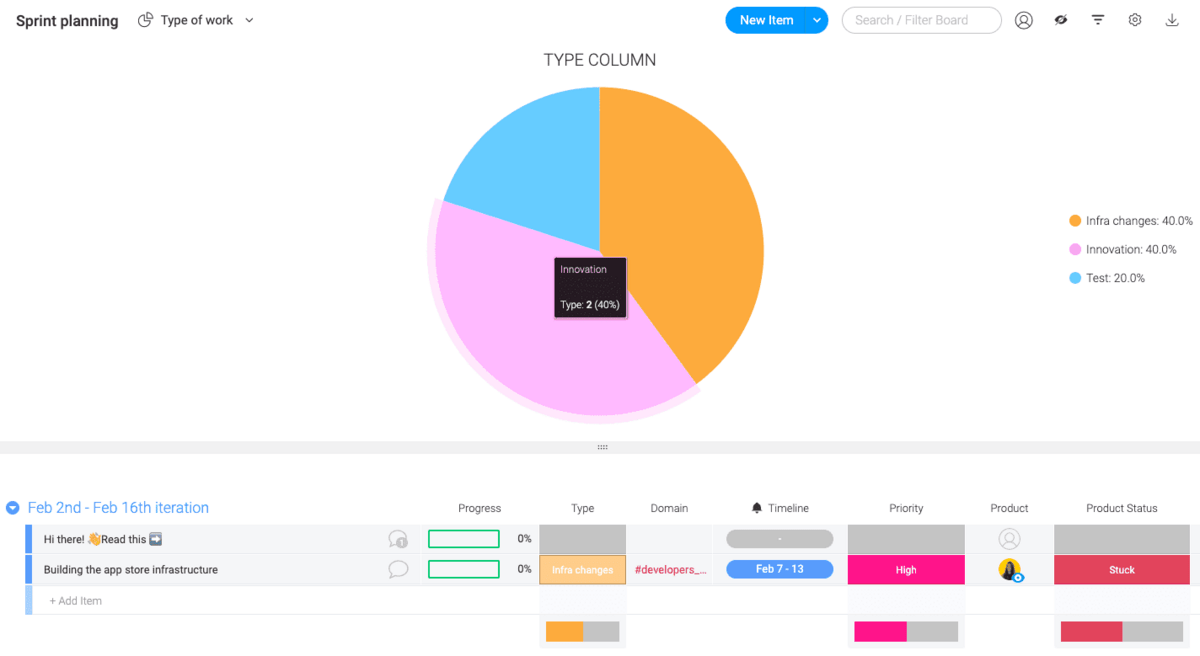
You can also use monday.com to schedule backlog refinement sessions for your development team.
The best part?
You can notify participants automatically.

This way, you can ensure everybody prioritizes your backlog grooming meetings.
Make it collaborative
Backlog grooming sessions are collaborative in nature.
Your product team must be fully engaged at all times.
This will ensure that everyone involved is on board and familiar enough with the process to get the most out of each session.
If your team isn’t available for a full-day refinement session, you can break it up into shorter back-to-back time blocks. You can even run multiple refinement sessions at once, depending on the requirements of your project.
A solid Work OS is essential at this stage.
On monday.com, for instance, you can invite your entire team to work within the same platform and centralize your collaboration in one place.
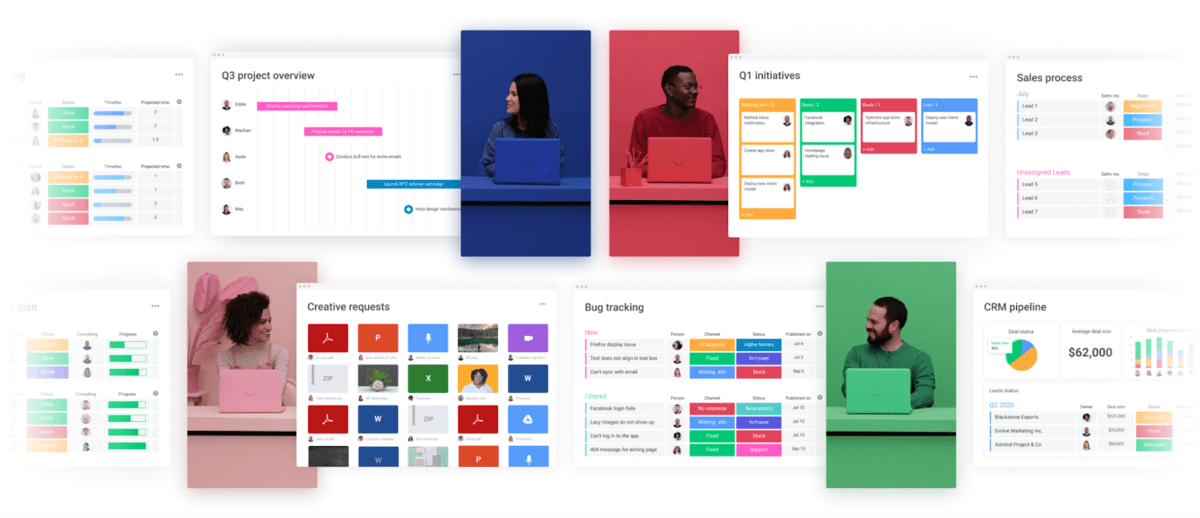
Centralization is essential to backlog grooming because it helps you see what everyone is doing and avoid duplication in the effort.
When you don’t have a shared backlog, some teammates might assign themselves tasks while others simply won’t know what the team is up to.
A shared backlog also provides transparency for stakeholders who want to know how things are progressing.
Define a clear goal for each session
Before you start a backlog grooming session, make sure to set a clear goal.
This goal will define the session’s deliverable or required outcome.
For instance, if you are grooming domain models, the goal might be “to agree on the central concepts of the application domain” or “to define candidate classes for user stories.”
If you are grooming user stories, the goal might be “to decide which story to implement next” or “to split large stories into smaller ones.”
The point is that you should leave the session with a list of actionable tasks.
This will keep you focused on achieving your goal and ensure that everyone involved knows what you are talking about at all times.
Dig deep into the details
When reviewing story cards for quality assurance (QA), take a look at the detail given about each task and ask what could be done to make it clearer.
The act of moving a task from “Backlog” to “In Progress” should raise some questions about what still needs to be done.
Think about how someone else would read the task information and whether it would make sense to them, too.
With monday.com, adding this level of detail to your backlog is pretty straightforward.
By simply double-clicking on a backlog item, you can add notes, images, checklists, and any other media to your tasks.
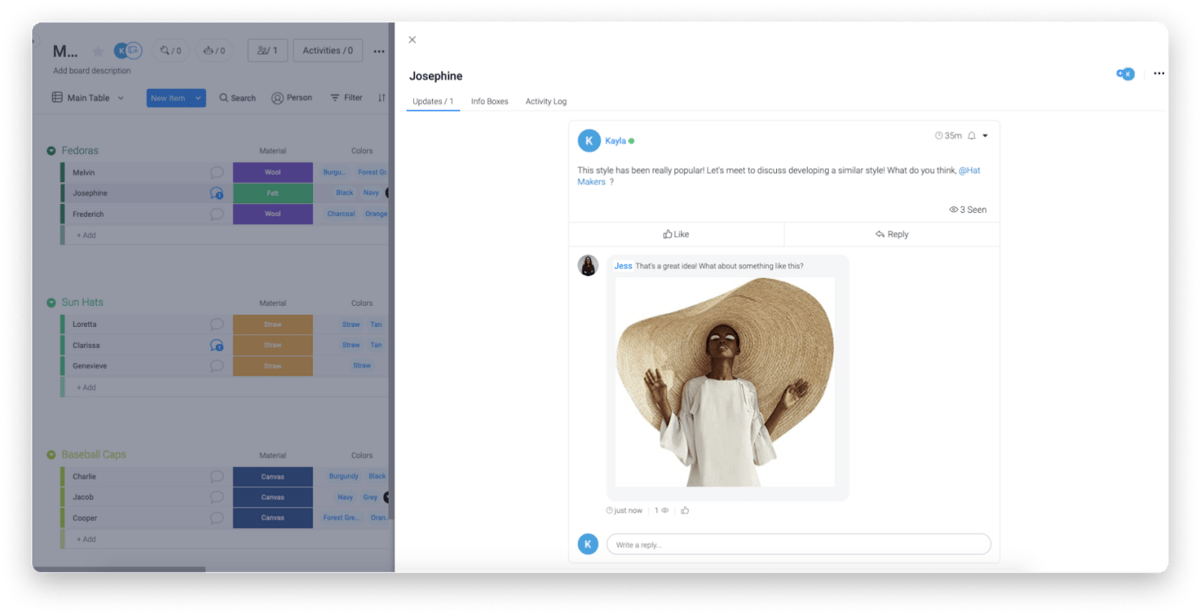
This way, every team member can communicate in context and always stay on the same page.
Take the 20/30/50 rule into consideration
The longer the backlog refinement meeting runs, the less focused people will be.
That’s why you should take the 20/30/50 rule into consideration.
This rule states that backlog refinement sessions should take no longer than 20% of the team’s capacity, last for no more than 30 minutes, and be limited to 50 story points.
People’s availability and concentration spans are not always constant.
They may be distracted by multiple things before and after the meeting, so it’s better to keep it short and to the point.
If you already know that 50 story points will take too long, then either cut down the number of points to be groomed or split that backlog into smaller pieces.
A step-by-step walkthrough to backlog grooming
Implementing backlog grooming isn’t hard, but you need a systematic approach to it. Otherwise, your grooming sessions might turn out to be counterproductive.
Here’s a quick and simple process you can follow:
1. Identify all the pending task requests
The first step in backlog grooming is to identify all the pending requests in your backlog — the list of work items that have been created from previous sprints.
Organize these product backlog items into a couple of different categories:
- Tasks that are estimated to take only a few hours and should be completed right away.
- Tasks that will need more discussion before estimating them — this could include getting approval from your manager or doing some research to get better clarity around the task.
- Tasks that will need a lot of discussion and might not be completed in the current sprint backlog — this includes tasks that have been added to the backlog from user feedback or ideas from different team members.
The aim here is to have a small number of user stories ready for the first grooming session.
Working on user stories in isolation is good practice at this point since they’re still fairly independent and easy to manage.
2. Combine similar items
Sort through the backlog to find user stories that are similar to one another and combine them into a single story.
Doing so will help keep it simple for everyone involved with the project.
The combined story should have a clear goal and be tested from start to finish.
3. Break down complex user stories for better planning
Complex user stories are difficult to plan and can take a lot of time to complete.
To break down these stories, look at their acceptance criteria and determine which ones need to be completed before moving on to the next step.
This will help you identify which stories are dependent on others and help simplify the overall process.
Here’s an example:
To fully use a system, users must have access to the password. In this case, “access to the password” is a necessary step in using the system.
More specifically, before users sign up for an account, they need some form of access to the password.
So, the first step is not related to the user signing up for an account — it’s more of a prerequisite for any action on their part.
Breaking down complex stories like this can help you figure out what needs to be completed before moving forward.
4. Review stories and prioritize tasks
After identifying which tasks need to be completed first, you can prioritize each one and determine how much time needs to be allocated for each story.
Knowing this allows everyone — from developers to product owners — to focus on moving forward with their work and helps rid the project of any bottlenecks that might arise in the future.
After you’ve gone through the entire backlog and assigned time to each task, try doing a quick review to figure out how long it will take to complete all of the tasks on your team’s plate.
If everything checks out, you can move on to grooming your backlog with the next step.
Another method to rank user stories is to use relative sizing.
This involves breaking down each item into smaller components before assigning them a size — small, medium, or large. As a result, this makes it easier to estimate and plan out work in relation to other tasks.
5. Actually groom the backlog
After sizing backlog items, reviewing them with the relevant stakeholders, and identifying options for each item, it’s time to actually groom the backlog.
Weed out items that are no longer relevant or feasible to implement.
Dump any items that don’t fit into the backlog.
And, remember to get rid of tasks you don’t have the capacity or skills to do.
Once you’re done here, you should have a smaller backlog that’s easier to understand and work with.
You should be left with backlog tasks that are clear and actionable. These are usually backlog items that have been already broken down into small chunks of work.
Now, remove any low-priority tasks from the backlog. This way, your backlog will contain only high-priority backlog items that need to be tackled urgently or create the most value.
6. Assign tasks and team responsibilities
When you’re done with your product backlog grooming session, the next step is to assign team responsibilities and tasks.
To do so, we suggest you tap into a Work OS that provides you with task management features.
For instance, with monday.com, you can assign tasks to specific team members, prioritize work, and oversee completion.
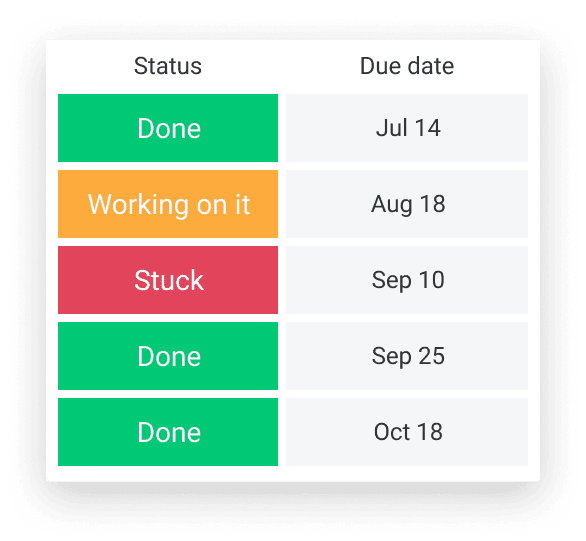
You can create unlimited tasks and categorize them based on department, project, product, or any other criteria that makes sense to you.
You can also set dependencies between tasks and schedule activities with reminders by email or SMS for better follow-up on deadlines.
With monday.com, you can also create Kanban boards for visualizing current work and collaborating with your team.
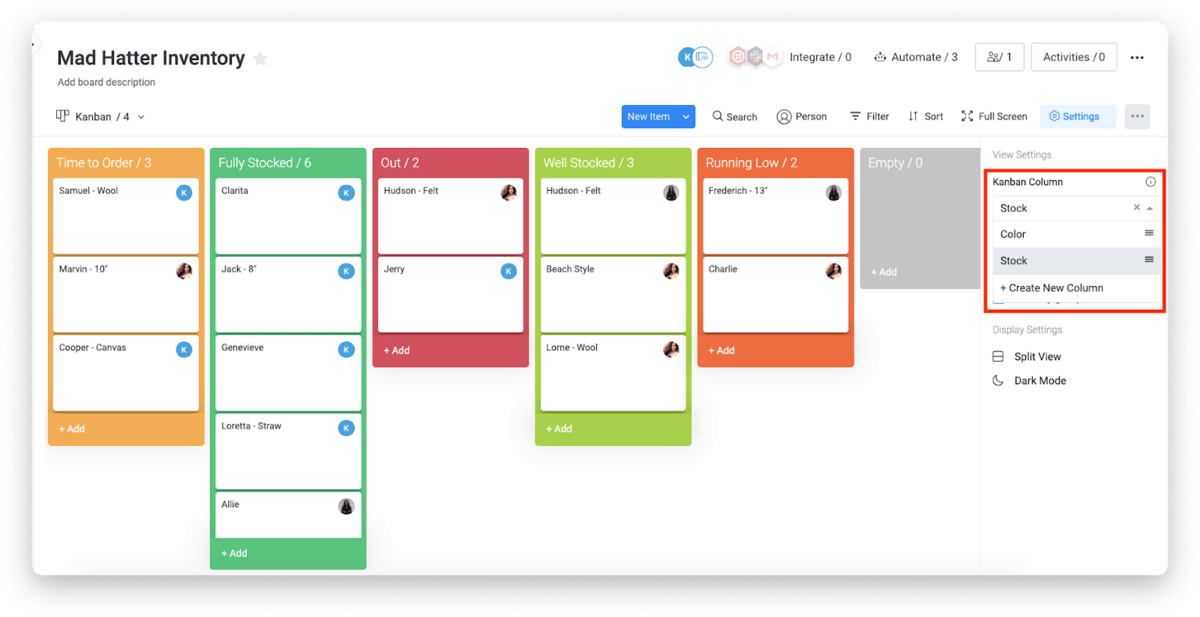
This lets you identify bottlenecks in the process, where work seems to be piling up, or just where you can help out.
Ready to refine your backlog?
Product backlog refinement is crucial for any product team, as it helps you make sure the backlog stays relevant throughout the entire lifecycle.
Hopefully, now you have enough information to start refining your backlog effectively.
And, if you’re looking for a platform that makes your work easy by providing you with powerful visualizations, automations, and tracking features, then monday.com can help.
To start, you can try out our fully customizable backlog template.
You can use it to organize, manage, and prioritize items in one central space.

